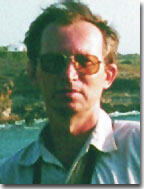|
|
||||||||||||||||
|
|
Obituaries |
|||||||||||||||
Born on 7 November 1945 in Sverdlovsk, Russia, Belinicher was one of the first students who graduated from the newly established Novosibirsk University in the Akademgorodok Scientific Center in Novosibirsk. In 1971, he received his PhD in physics and mathematics, under the supervision of Dmitrii Shirkov, for work on the Lagrangian formalism for particles of arbitrary spin. He earned his DSc degree in 1982 on the theory of the photogalvanic effect. In 1973, Belinicher joined the Institute of Automation and Electrometry of the Russian Academy of Sciences (RAS) as a research scientist. He particularly enjoyed the atmosphere of intense scientific interaction and intellectual challenge at Akademgorodok. He studied a variety of problems in condensed matter physics, semiconductor physics, and the physics of nonlinear phenomena. One of his most important contributions was a comprehensive theory of the photogalvanic effect in crystals that lack inversion symmetry. The systematic microscopic theory worked out by Belinicher and his colleagues addressed the most important mechanisms producing the effect, ultimately connecting the effect's origin to the absence of a detailed balance condition in media that lack a center of symmetry. A review article by Belinicher and Boris I. Sturman published in 1980 in Soviet Physics Uspekhi on the photogalvanic effect remains one of the most cited works in the field. While at the institute, Belinicher began a long-lasting collaboration with one of us (L'vov). In 1984, they developed a new diagrammatic technique--which generalized the Keldysh formalism to the case of spin operators--for nonequilibrium processes in magnetism. In subsequent work in 1987, they formulated the scale-invariant theory of hydrodynamic turbulence. An earlier approach, advanced in the 1960s by Henry Wyld, suffered from divergences in each order of perturbation theory, and known regularizations were limited to the first order. Belinicher and L'vov found a transformation, now named after them, which removes divergences from all orders. This notable work created a basis for further intensive studies of hydrodynamic turbulence by means of modern methods of theoretical physics. Belinicher joined the RAS's Institute of Semiconductor Physics in 1988 as a leading research scientist. His interests turned toward the newly discovered high-Tc superconductors and to the general problem of strong electronic correlations associated with those materials. Belinicher worked intensely to develop a model that would describe the essential electronic properties of high-Tc materials. The contributions he made, together with his graduate students and colleagues, to the understanding of the physics of the Hubbard model, spin liquids, and spinpolaron mechanisms of superconductivity significantly influenced progress in those areas. In recent years, he devoted much of his time to the derivation of a consistent field theory of the two-dimensional antiferromagnet and to yet another strongly correlated problem--Coulomb blockade in a system of quantum dots. Undoubtedly, Belinicher's contributions to physics will continue to serve as a basis for new findings, and his work will become part of textbooks for future generations of physicists. Belinicher also lectured and mentored many students at Novosibirsk University, where he was appointed as a professor of physics in 1995. He taught both undergraduate and advanced theoretical courses. In the 1990s, Belinicher was a visiting professor at several institutions in Europe and Israel, particularly at the University of Coimbra in Portugal, and the Weizmann Institute of Science in Rehovot, Israel, where he contributed invaluably to many studies. His outgoing, cooperative character together with an extraordinary dedication to physics brought him many friends and professional colleagues from all around the world. Belinicher was an intense and persistent man who believed deeply in maintaining the quality of his research. For him, science was the absolute priority in his life. He approached nonscientific problems with the same energetic attitude that he applied to his research, whether they involved an issue in turbulent Russian politics or a development of the local computer network. He taught students to treasure the time they devoted to research. Belinicher was open and optimistic, and generously shared his energy and vigor. He was a bright, talented theorist who pursued the deepest and most complicated problems in physics. He was full of plans for the future when the terrible accident ended his life. His family, friends, and colleagues have suffered a great loss.
Sasha Chernyshev
Oak Ridge National Laboratory
Oak Ridge, Tennessee
Konstantin Kikoin
Ben-Gurion University
Beer-Sheva, Israel
Victor L'vov
Weizmann Institute of Science
Rehovot, Israel
© 2002 American Institute of Physics
|
||||||||||||||||
